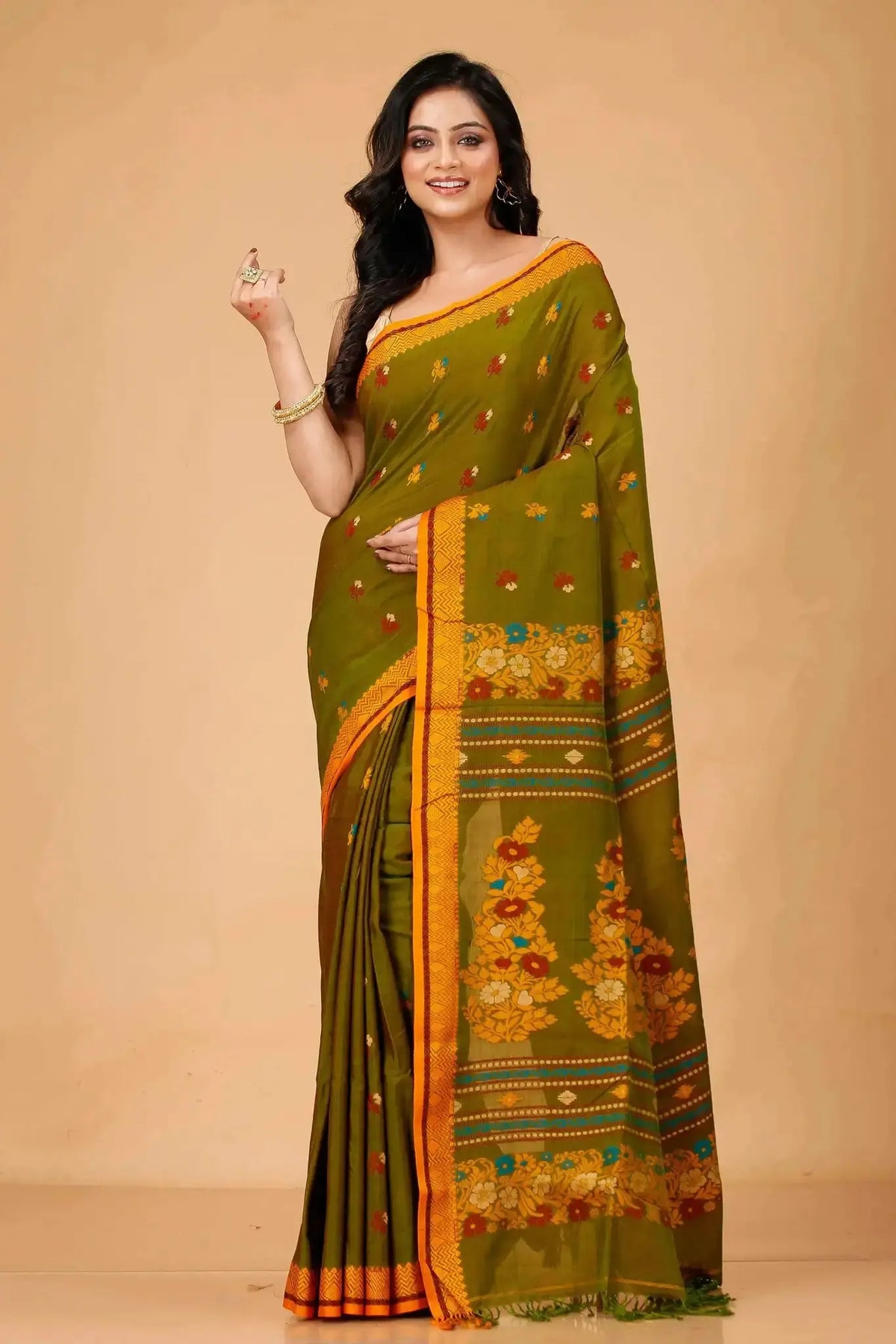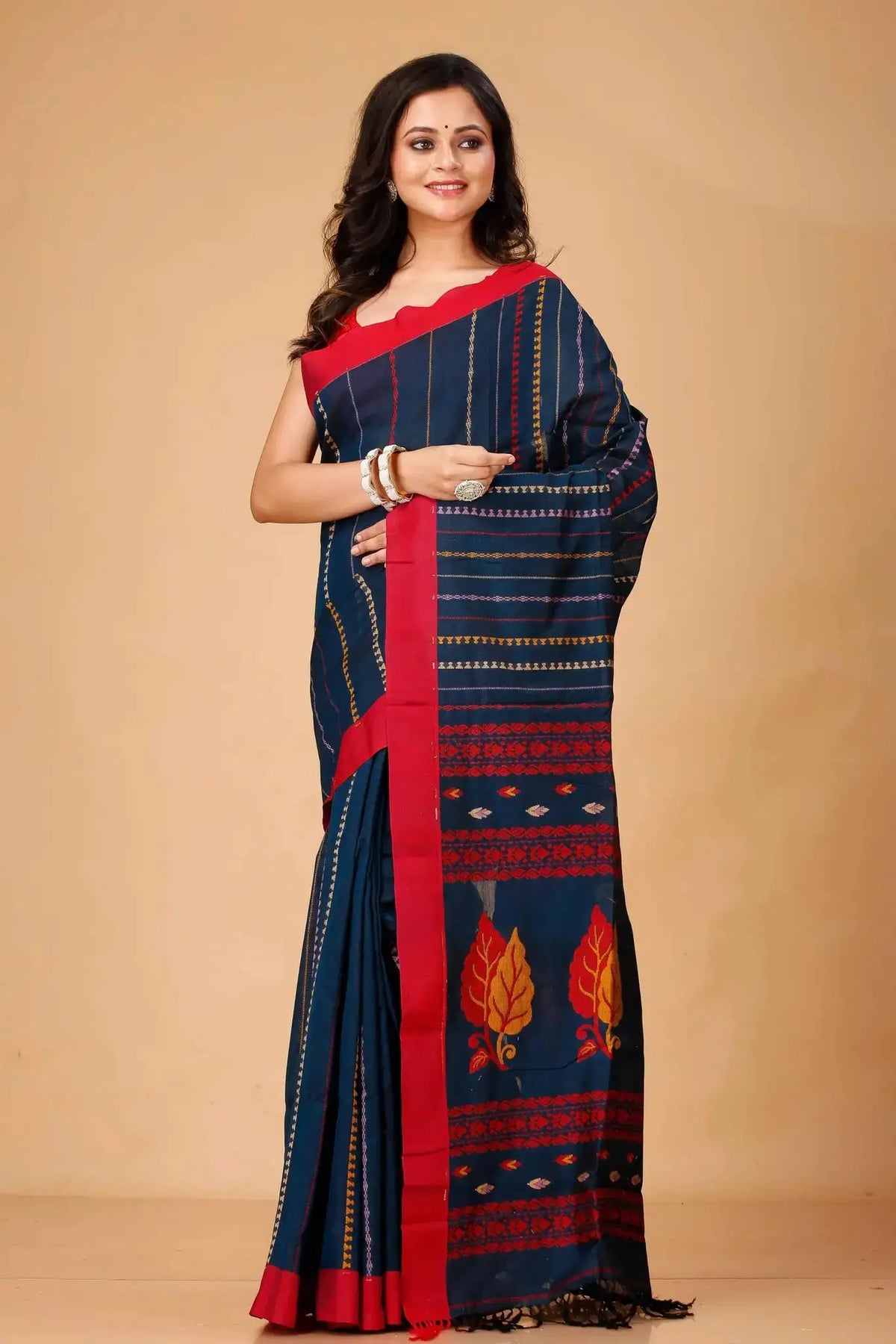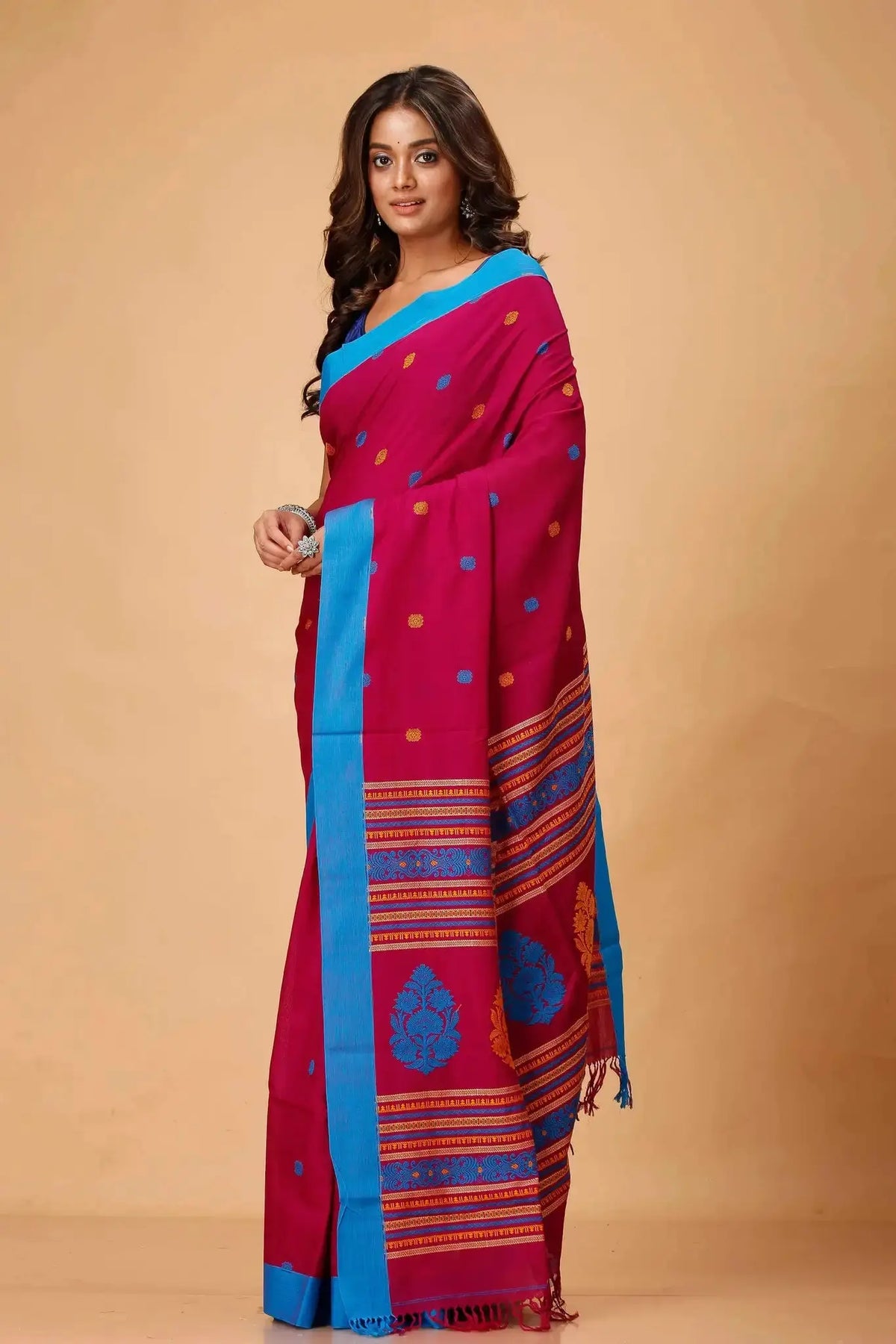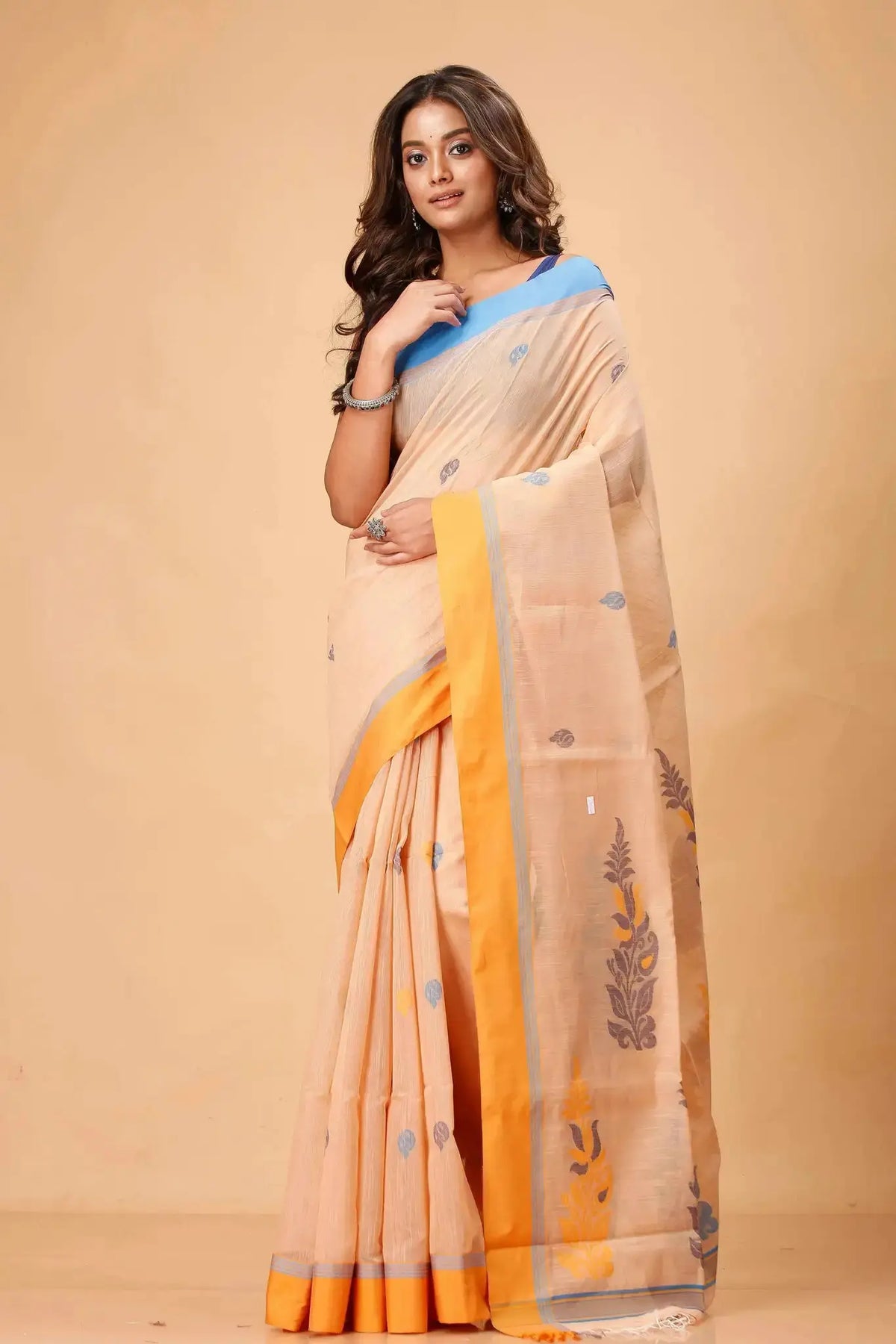The allure of the South Indian saree is an epitome of cultural heritage, weaving intricacies, and the elegance that traces its roots back over centuries. Among the various influences that have shaped South Indian saree craftsmanship, the artistry of Bengal handloom holds a remarkable place. Bengal handloom, known for its distinct weaves and textures, has significantly contributed to the aesthetic and functional attributes of these sarees, melding regional nuances into a magnificent tapestry of tradition and style. This blog delves into the historic influence of Bengal handloom on South Indian saree craftsmanship, unraveling a fascinating journey of art, craft, and culture.
The Rich Heritage of Bengal Handloom
Bengal, a region known for its rich tradition of textile arts, has long been revered for its handloom products, particularly the iconic jamdani sarees. Characterized by intricate patterns woven into cotton fabric, jamdani is a fine muslin textile that boasts of a heritage stretching back to ancient times. Handwoven with meticulous attention to detail, these sarees embody the skill and creativity of weavers who have passed down their craft through generations.
An example of the exquisite Bengal handloom is the Coffee - Pure Cotton Bengal Handloom Traditional Handwoven Indian Saree. This saree captures the essence of traditional artistry with its pure cotton weave, providing a perfect blend of comfort and elegance.
The Weaving Culture of South India
In South India, saree weaving is not merely an occupation; it is an integral part of the cultural tapestry. The region is famous for its vibrant colors, intricate designs, and luxurious fabrics in saree craftsmanship. Notable styles such as Kanjeevaram, Gadwal, and Pochampally have long captured the imagination of saree connoisseurs. These styles often feature bold motifs and vibrant hues, symbolizing the rich cultural diversity of the southern states.
Influence of Bengal Handloom Techniques
The enchanting art of Bengal handloom weaving has had a profound influence on South Indian saree craftsmanship. Weavers from Bengal have traveled to different parts of South India, carrying with them their unique weaving styles and techniques. This exchange of ideas and methodologies has led to a harmonious fusion of styles, resulting in sarees that elegantly blend the intricacies of Bengal's handloom with South Indian aesthetics.
Integration of Jamdani Patterns
The delicate and intricate jamdani patterns have found their way into South Indian sarees, adding a layer of sophistication and ethereal beauty. Be it the subtle elegance of the motifs or the complexity of the weave itself, jamdani's influence is evident in the evolution of designs favored in the southern states. The combination of light and airy fabrics with detailed designs has given rise to sarees that are perfect for the warm climates characteristic of South India.
An exquisite example that marries intricate jamdani influences with South Indian aesthetics is the White & Light Blue- Bellu Cotton Handloom Fancy Mix Design Saree With Blouse Piece. The blend of white and blue hues embodies a serene elegance, reflecting how cross-regional influences can produce masterful creations.
The Significance of Cotton
Cotton, a staple material in both Bengal and South Indian weaving traditions, plays a central role in the crafting of these regional sarees. Known for its breathability and comfort, 100% cotton sarees are favored across the Indian subcontinent for their ability to withstand diverse climates while providing unmatched comfort.
Bengal’s Contribution to Cotton Weaving
Bengal's expertise in crafting cotton textiles is well renowned. The region is famed for producing lightweight sarees that drape effortlessly. The traditional art of cotton weaving is exemplified by the Reddish Orange- Bellu Cotton Handloom Fancy Mix Design Saree With Blouse Piece. This saree showcases vibrant colors and intricately woven patterns, a testament to the mastery of Bengal's cotton weaving techniques.
Cotton’s Role in Southern Designs
The elegance and finesse of Bengal handloom cotton have inspired South Indian weavers to integrate cotton extensively in their saree designs. This fusion has led to the creation of sarees that are both practical for daily wear and exuberant enough for festive occasions. The marriage of South Indian traditional elements with Bengal’s superior cotton quality has resulted in a range of 100% cotton sarees that embody beauty and utility.
A beautiful representation of the fusion of Bengal handloom and South Indian design principles can be seen in items like the Grey Manipuri Cotton Saree With Forest Green Border Woven Pallu. The saree highlights a rich color palette and the intricate craftsmanship typical of the collaborative textile traditions.
The Road Ahead: Preserving and Innovating
The historical integration of Bengal handloom techniques into South Indian saree craftsmanship is more than a mere fusion of styles; it is a cultural dialogue that continues to evolve. As global interest in traditional crafts grows, there is an opportunity to further innovate while honoring these traditional methods.
Through continuous efforts to preserve these artisanal techniques, innovations can be introduced that cater to contemporary fashions without losing the essence of traditional storytelling through textiles. The world of handloom sarees remains vibrant with possibilities, poised for a future where the past and present coexist beautifully.
Explore the rich diversity of Bengal and South Indian sarees by visiting Grivana, where craftsmanship and history come together in every weave.








